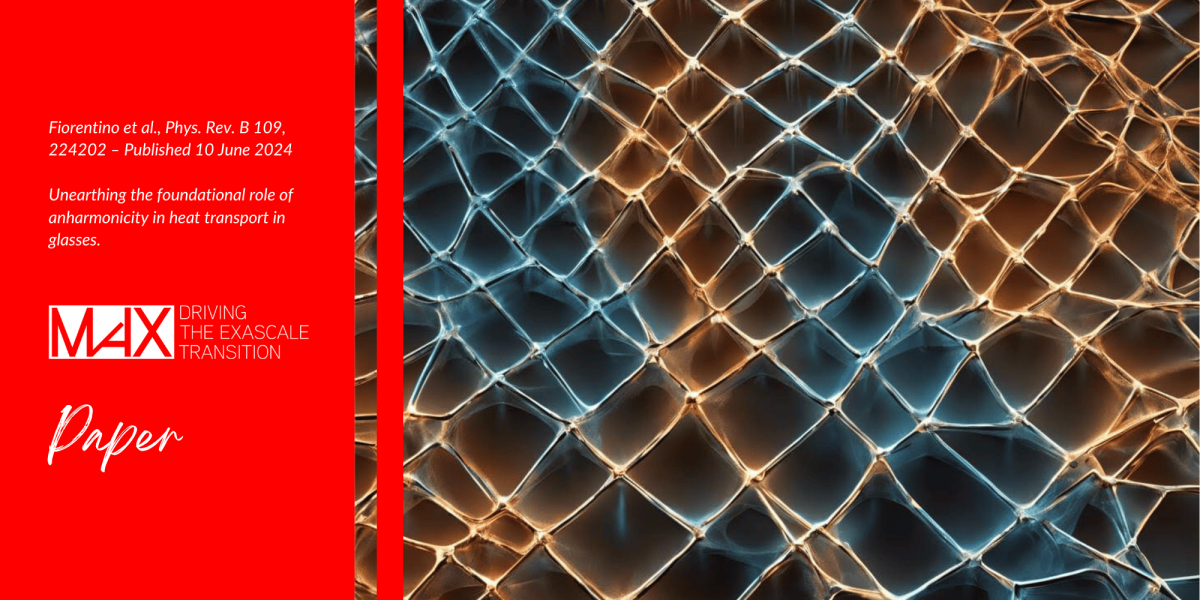Advancing heat transport theory and numerical simulations in glasses
A team of researchers explores the influence of the infrared singularity in the harmonic theory of heat conduction in glassy materials and explains the nuanced effectiveness of the Allen-Feldman theory.

Figure: Abstract representation of a glassy system perturbed by a temperature gradient. Note: The image was generated using DreamStudio.
The Allen-Feldman (AF) theory of heat transport in glasses has long been used to predict finite thermal conductivity. However, AF theory overlooks the role of anharmonic effects in vibrational modes.
In this study, a team of researchers investigates the influence of infrared singularities within the harmonic theory of heat conduction in glassy materials. Through careful numerical simulations, the authors demonstrate that the harmonic approximation for disordered solids predicts a divergent bulk lattice thermal conductivity at all temperatures.
«Heat transport is of great computational interest in the condensed matter community,» says Enrico Drigo (SISSA), one of the paper's co-authors: «Properly accounting for anharmonic effects is crucial, as it allows for finite predictions of thermal conductivity in any solid material.»
By incorporating these anharmonic effects using the quasi-harmonic Green-Kubo (QHGK) theory, the researchers successfully regularized the singularity in the bulk limit at any finite temperature, without the need for quantum tunneling or arbitrary infrared cutoffs.
This study underscores the crucial role of anharmonic effects in heat transport across both amorphous and crystalline systems, providing insight into the “nuanced” success of the AF theory.
The authors extend their gratitude to the Max Centre for its continuous support.
Reference article:
Unearthing the foundational role of anharmonicity in heat transport in glasses.



